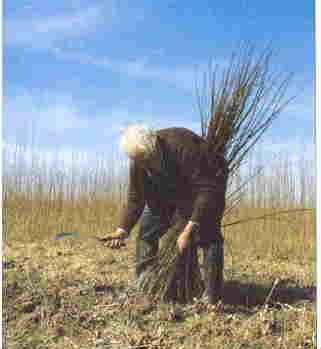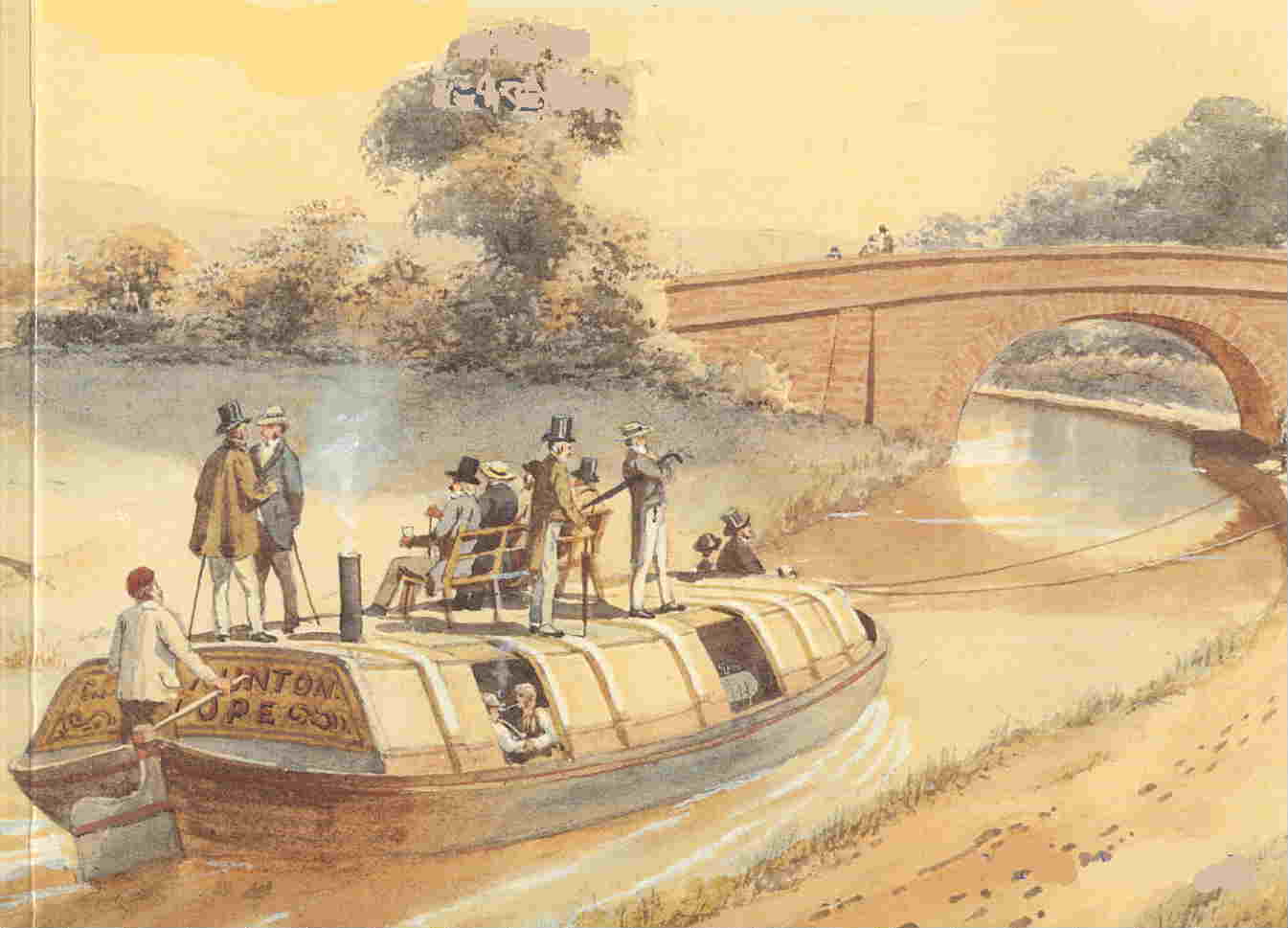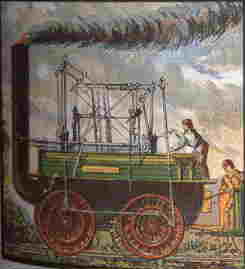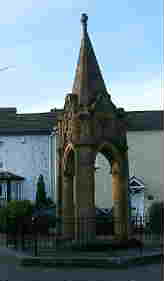|
19th Century North Curry
 Although farming and
withy growing provided much employment, services and trades also thrived
in North Curry and residents had no need to leave the village to find
skills and labour. The population of North Curry at the time of Domesday
was 195. Braggs Directory of 1840 reports the population of North
Curry as 1,833. According to information taken from Census Returns of the
Parish of North Curry during the period 1841 to 1891 there were nearly 500
different occupations listed for the residents of the parish. These ranged
from bakers, blacksmiths, saddlers and shoemakers to carpenters and
tailors, as well as the gentry and professionals with their domestic
servants, farmers and numerous farm labourers. For anyone
researching their family history, extracted details from these Census
Returns can be provided by Angela Dix. Although farming and
withy growing provided much employment, services and trades also thrived
in North Curry and residents had no need to leave the village to find
skills and labour. The population of North Curry at the time of Domesday
was 195. Braggs Directory of 1840 reports the population of North
Curry as 1,833. According to information taken from Census Returns of the
Parish of North Curry during the period 1841 to 1891 there were nearly 500
different occupations listed for the residents of the parish. These ranged
from bakers, blacksmiths, saddlers and shoemakers to carpenters and
tailors, as well as the gentry and professionals with their domestic
servants, farmers and numerous farm labourers. For anyone
researching their family history, extracted details from these Census
Returns can be provided by Angela Dix.
Paupers were housed in a
workhouse in North Curry and a few chosen men of the village were employed
as Overseers of the Poor until the 20th century. In the middle
of the 19th century there was a Town Crier called Mr Buzzy who
spread the news, and doctors and surgeons operated in the village and
dealt with all medical needs.
 The River Tone
Navigation was used by boats of up to 15 tons to discharge their cargo at
New Bridge and Knapp Bridge. Coal barges came at high tide and supplied a
coal merchant in the village and many goods were taken to Bridgwater by
water. A journey to Taunton took the best part of a day and a horse and
cart provided transport for all manner of passengers and produce. Milk was
delivered with a shoulder carrier carrying two buckets of milk and women
would walk to Taunton with butter and eggs. The River Tone and the
Bridgwater Canal were used to send hay as far as South Wales. The River Tone
Navigation was used by boats of up to 15 tons to discharge their cargo at
New Bridge and Knapp Bridge. Coal barges came at high tide and supplied a
coal merchant in the village and many goods were taken to Bridgwater by
water. A journey to Taunton took the best part of a day and a horse and
cart provided transport for all manner of passengers and produce. Milk was
delivered with a shoulder carrier carrying two buckets of milk and women
would walk to Taunton with butter and eggs. The River Tone and the
Bridgwater Canal were used to send hay as far as South Wales.
 The
coming of the railway in the 1800ís gave people opportunities to travel
further afield, not so much for work, but for many leisure pursuits and to
mix with and marry people from afar. In 1870 a new road was constructed to
make it easier to get to Durston Station. During the 19th
Century, amenities and entertainment were all to be found in the parish.
There were numerous inns in the parish - The Angel, The Bird in Hand, The
Bell, and The White Hart in North Curry: the Rising Sun and Royal Oak in
Knapp: the New Inn at New Bridge; The Wheelwrights and The Canal Inn in
Wrantage; The Star at Lillesdon. As well as these there were numerous
small establishments making and selling cider from the many apple
orchards. A malthouse and a small brewery produced beer for the village
and surrounding area. There were mills in Newport, Knapp and Ham since
early days. The
coming of the railway in the 1800ís gave people opportunities to travel
further afield, not so much for work, but for many leisure pursuits and to
mix with and marry people from afar. In 1870 a new road was constructed to
make it easier to get to Durston Station. During the 19th
Century, amenities and entertainment were all to be found in the parish.
There were numerous inns in the parish - The Angel, The Bird in Hand, The
Bell, and The White Hart in North Curry: the Rising Sun and Royal Oak in
Knapp: the New Inn at New Bridge; The Wheelwrights and The Canal Inn in
Wrantage; The Star at Lillesdon. As well as these there were numerous
small establishments making and selling cider from the many apple
orchards. A malthouse and a small brewery produced beer for the village
and surrounding area. There were mills in Newport, Knapp and Ham since
early days.
A small cinema was
located in Moor Lane and many dances with music supplied by the village
band and meetings of clubs and societies took place in the schoolroom and
later at the Morris Memorial Hall. A Penny Library was started at the
Vicarage and the Annual Fete with sporting activities was held in the
grounds of Moredon. Magic lantern shows were very popular and the Flower
Show with sideshows and entertainment was held annually.
The Parish
Council was inaugurated in 1894. Nine councillors were elected with
the Vicar as Chairman. Before this a meeting of inhabitants and ratepayers
of the parish met annually to nominate proper persons to serve as
Overseers of the Poor, to nominate two persons to serve as Guardians of
the Poor and two persons to serve as collectors of taxes.
In 1897 a stone memorial
(right) was erected in the centre of the village to commemorate the
60th year of the reign of Queen Victoria. It has become known
as the Pepper Pot because of its shape.
A War Memorial (left)
was erected in Queen Square dedicated to the memory of those who fell in
the First and Second World Wars. 31 men lost their lives.
For more information on the history of
North Curry why not buy a copy of "North Curry - A Place in History"
by Angela Dix. For details go to
http://www.dixuk.com.
|
 Although farming and
withy growing provided much employment, services and trades also thrived
in North Curry and residents had no need to leave the village to find
skills and labour. The population of North Curry at the time of
Although farming and
withy growing provided much employment, services and trades also thrived
in North Curry and residents had no need to leave the village to find
skills and labour. The population of North Curry at the time of  The River Tone
Navigation was used by boats of up to 15 tons to discharge their cargo at
New Bridge and Knapp Bridge. Coal barges came at high tide and supplied a
coal merchant in the village and many goods were taken to Bridgwater by
water. A journey to Taunton took the best part of a day and a horse and
cart provided transport for all manner of passengers and produce. Milk was
delivered with a shoulder carrier carrying two buckets of milk and women
would walk to Taunton with butter and eggs. The River Tone and the
Bridgwater Canal were used to send hay as far as South Wales.
The River Tone
Navigation was used by boats of up to 15 tons to discharge their cargo at
New Bridge and Knapp Bridge. Coal barges came at high tide and supplied a
coal merchant in the village and many goods were taken to Bridgwater by
water. A journey to Taunton took the best part of a day and a horse and
cart provided transport for all manner of passengers and produce. Milk was
delivered with a shoulder carrier carrying two buckets of milk and women
would walk to Taunton with butter and eggs. The River Tone and the
Bridgwater Canal were used to send hay as far as South Wales. The
coming of the railway in the 1800ís gave people opportunities to travel
further afield, not so much for work, but for many leisure pursuits and to
mix with and marry people from afar. In 1870 a new road was constructed to
make it easier to get to Durston Station. During the 19th
Century, amenities and entertainment were all to be found in the parish.
There were numerous inns in the parish - The Angel, The Bird in Hand, The
Bell, and The White Hart in North Curry: the Rising Sun and Royal Oak in
Knapp: the New Inn at New Bridge; The Wheelwrights and The Canal Inn in
Wrantage; The Star at Lillesdon. As well as these there were numerous
small establishments making and selling cider from the many apple
orchards. A malthouse and a small brewery produced beer for the village
and surrounding area. There were mills in Newport, Knapp and Ham since
early days.
The
coming of the railway in the 1800ís gave people opportunities to travel
further afield, not so much for work, but for many leisure pursuits and to
mix with and marry people from afar. In 1870 a new road was constructed to
make it easier to get to Durston Station. During the 19th
Century, amenities and entertainment were all to be found in the parish.
There were numerous inns in the parish - The Angel, The Bird in Hand, The
Bell, and The White Hart in North Curry: the Rising Sun and Royal Oak in
Knapp: the New Inn at New Bridge; The Wheelwrights and The Canal Inn in
Wrantage; The Star at Lillesdon. As well as these there were numerous
small establishments making and selling cider from the many apple
orchards. A malthouse and a small brewery produced beer for the village
and surrounding area. There were mills in Newport, Knapp and Ham since
early days.
